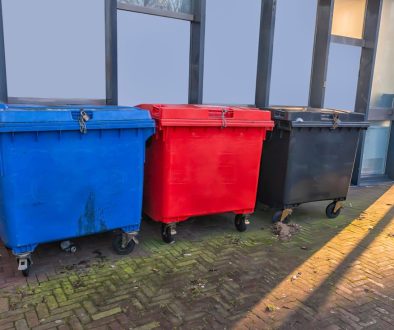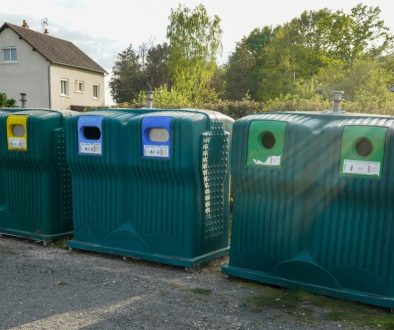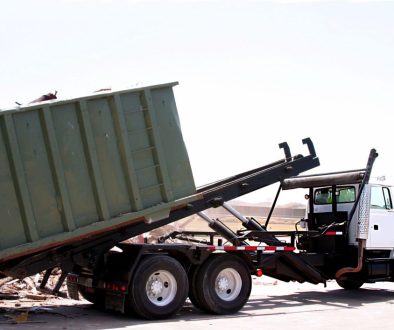Commercial and personal recycling has gained popularity as society has become more environmentally concerned.
Many people who aren’t as familiar with recycling tend to think that it just involves throwing things into a bin and you are finished. Recycling, however, is a complex process that requires specific items to be separated according to the material they are made of.
One reason recycling has become so popular is that it helps conserve natural resources and reduce the amount of waste that enters landfills and incinerators. By using recycled materials, businesses and municipalities can reduce the number of raw materials they need to mine.
Moreover, commercial recycling differs from personal recycling in that retail businesses have a greater need for it. Businesses generate more waste than any other type of enterprise. This makes commercial recycling an essential factor in improving our environment.
Let’s dive deeper into discussing everything there is to know about commercial recycling.
What Is Commercial Recycling?
Commercial recycling is a process through which businesses and corporations recycle the materials they use. When companies recycle, they can use the materials they have collected to make new products.
One reason businesses choose to recycle is that it allows them to reduce costs related to purchasing raw materials. Moreover, recycling can also help companies reduce the amount of waste they generate.
Types and Methods of Commercial Recycling
1. Cardboard Recycling
Cardboard recycling is the process of using discarded cardboard boxes to make new boxes or other products. The boxes must be sorted and separated to recycle cardboard based on their size and colour.
When working with enormous amounts of cardboard, compressing the material into bales makes transportation and storage easier. Screw compactors and other types of compacting equipment are also employed.
2. Plastic Recycling
Plastic recycling is the process of using discarded plastic material to make new products. They need to be sorted and separated according to their resin code to recycle them. This process involves collecting, sorting and processing plastic.
The separated plastic is then shredded and melted to make new plastic products. Sometimes, additives are also used to increase the durability and flexibility of the new product.
The following are the types of recyclable plastics.
- HDPE – High-Density Polyethylene
- PET – Polyethylene terephthalate
- PP – Polypropylene
3. Metal Recycling
Metal recycling involves collecting and separating ferrous and non-ferrous metals. These metals can be recycled in various products, such as railroad tracks, automobiles and appliances. Additionally, there is also the issue of mixed metal, such as cans and mobile phones.
Firstly, the larger pieces are separated, and the smaller samples are collected together. This is followed by magnetic separation, which is used to separate ferrous and non-ferrous metals by using a magnetic field.
The non-magnetic materials are then separated by density. Density separation is often used with low-grade aluminium to separate it from steel.
4. Wood Recycling
Lumber is made of cellulose, and it can be broken down into multiple parts. The byproducts of wood recycling are sawdust, shavings and bark. Wood is categorised, and the categorisation determines the required recycling type. Collection, transportation through specialised trucks, and disposal at designated locations are part of commercial wood recycling services.
There are two types of wood recycling: mechanical and chemical. Commercial wood recycling usually employs both of these methods.
In mechanical recycling, the wood is compressed and then dried. This process breaks down the wood into small pieces, which allows it to be used as fuel. This process contributes to the production of wood-fired energy.
The chemical recycling of wood is done in a furnace. The furnace can use either oil or natural gas. The process results in large amounts of heat, and the dried wood is obtained through large fans. This dried wood can be used as fuel as well.
5. Textile Recycling
Clothes have a lot of fibre, which can be turned into new clothes. Its recycling process is similar to the process for plastic recycling, and the fabric’s colour does not affect the process.
An essential part of textile recycling is the use of automated equipment. This equipment is often used to separate the different materials that make up the textile products.
Benefits of Commercial Recycling Services
1. Reduce Carbon Footprint
When you choose to work with a commercial recycling company, you can contribute to reducing the carbon footprint in the environment. When businesses decide to dispose of waste properly, they take responsibility for their waste’s impact on the environment.
Commercial recycling services can be beneficial to both the environment and the economy. In the end, commercial recycling services help you to do your part in protecting the environment by using recycled material to come up with new products.
2. Economic Benefit
When businesses recycle, they can use recycled materials to make new products. Using recycled material can reduce the amount of new raw materials they need to mine. Reducing the number of raw materials a business needs to obtain can reduce costs related to raw materials.
3. Improve Brand Image
The commercial sector is increasingly sensitive to its impact on the environment. Businesses are being more careful in making decisions that may affect the environment. Companies that positively impact the environment receive good feedback and may receive benefits from their investment in recycling.
Moreover, businesses can also promote their brand by choosing to partner with a company that recycles. This can be advantageous as it will help them increase their reputation and make them more profitable.
Conclusion
As we can see in this article, commercial recycling can benefit both the environment and the economy. Businesses choose to use recycling because it allows them to reduce costs related to purchasing raw materials, reduce waste and improve their brand image.
Firms must sort their rubbish and ensure it is correctly disposed of to benefit from commercial recycling. Hiring commercial recycling services can also be a good move for you, as it will ensure that your waste is disposed of properly.
If you choose Enviro Skip Hire, it would be best if you need a large skip hire! We provide a service to our commercial clients to encourage recycling in the workplace. Contact us now!




